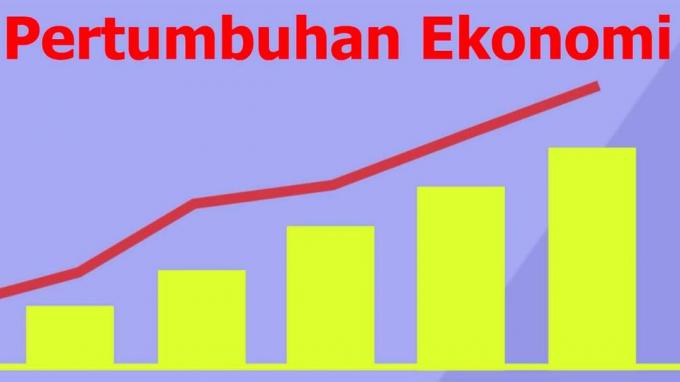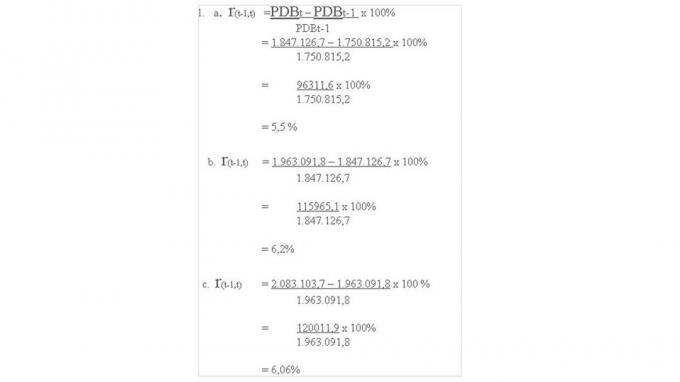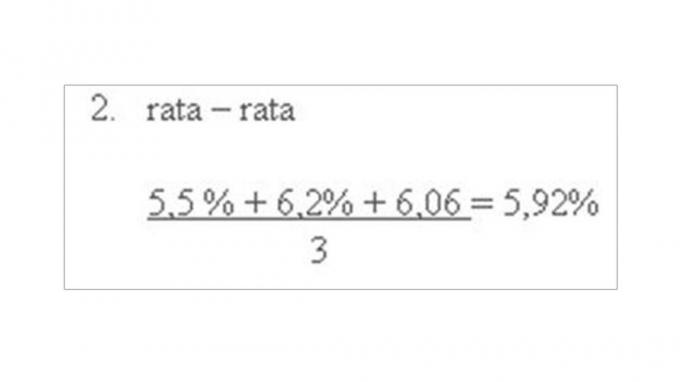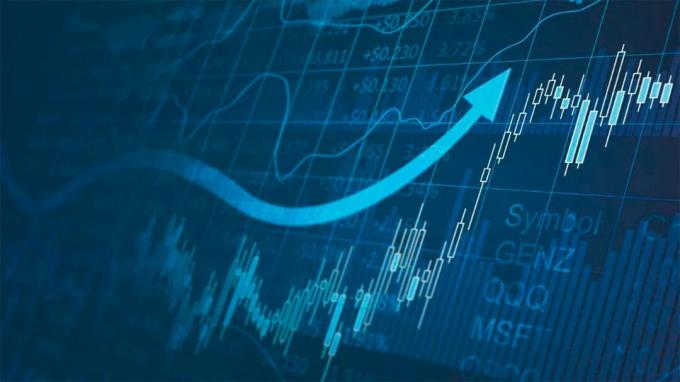Economic Growth Theory: Definition, Formulas, Example Problems, Theory
Hey guys, have you ever heard people talk about “economic growth” or “the theory of economic growth” itself?.
In economics lessons, we also get material on economic growth you guys. Confused?
Don't worry, this time yuksinau.id will provide information about economic growth along with several supporting theories.
Keep on reading until the end!
Table of contents
Definition & How to Calculate Economic Growth

A country is said to have experienced economic growth if the amount of production of goods and services produced increases.
In other words..
Economic growth is an increase in community economic activity that can lead to an increase in the amount of production of goods and services or an increase in national income.
Not only that guys, economic growth is also defined as a process of shifting the economic condition of a country on an ongoing basis towards a better economic condition for a certain period of time.
This economic growth can be used as an indication of the success of economic development in social life.
Thus, calculating the value of economic growth is very important to do.
One way to calculate it is using calculate money value. The value of money will be reflected in gross domestic product (GDP).
Well, to calculate the amount of GDP, the government needs to list all types of production by businesses in the country that will be sold.
Wow a lot of course.
Furthermore, after recording all the types of production, calculations are carried out for all output country's economy.
Included in the output are all goods and services produced by the businesses that have been recorded earlier.
Measurement or calculation of economic growth cannot be carried out all the time.
Because data collection from GDP is very difficult to do. So usually to calculate it is only done every three months and annually.
How to Measure Economic Growth
The economic growth of a country can be calculated using a comparison method. Example: for national size, Gross National Product (GNP), the current year with the previous year. –sc: wikipedia.
The following formula can be used to calculate economic growth here guys:
Economic Growth Formula:

Information:
PDBt = GDP in year t.
PDBt – 1 = Gross Domestic Product of the previous year.
*) year t: the current year or the year to find the value. (based on constant prices).
Problems example:
| No | Year | GDP (in billion IDR) |
| 1 | 2005 | Rp1,750,815,20 |
| 2 | 2006 | Rp1,847,126,70 |
| 3 | 2007 | Rp1,963,019,80 |
| 4 | 2008 | Rp2,083,103,70 |
Question:
- Calculate Indonesia's annual economic growth rate based on the data above!
- What is the average economic growth from 2005 to 2008?
Answer:


So, the average of economic growth from 2005 to 2008 is 5.92%.
Theory

Even though they basically have similarities, there are different points of view regarding the explanation of economic growth.
The difference is based on the flow.
Come on just look at the theory of economic growth:
1. Classical Economic Growth Theory
- Adam Smith
Seeing if an economy will grow if there is an increase in population which will expand the market and encourage specialization.
The emergence of this specialization will increase the level of worker productivity and encourage progress in terms of technology to economic growth.
- David Ricardo
Population growth that is too high can trigger a boom in the workforce. The booming workforce will trigger a decrease in wage income, where wages can only be used to finance the minimum level of living (subsistence level). In this stage, the economy will experience stagnation (stagnation) which is referred to as stationary state.
- Thomas Robert Malthus
Do you still remember about the material of series and arithmetic? Well, Malthus used this material and arithmetic as a tool to suggest that foodstuffs would increase in an arithmetical sequence (1, 2, 3, 4, 5, and so on).
Meanwhile, the population will increase according to a geometric progression (1, 2, 4, 8, 16 and so on).
It causes, food will not be enough to support the population (there will be starvation), until the people live at a subsistence level (medium) and the economy will stagnate.
2. Neoclassical Economic Growth Theory.
- Harrod-Domar
The need for capital formation or investment as a condition for achieving steady economic growth (steady growth). If capital formation has been carried out, the economy will be able to produce various goods in greater quantities.
- Schumpeter
At other times, the population is considered as the main aspect in the process of development and economic growth. Schumpeter thought that economic growth will be determined by the ability of entrepreneurship (entrepreneurship), because they dare to innovate in production activities.
- Robert Solow
According to Solow's idea, in the long term, the level of savings will be able to determine the capital in the process of a production. means, The higher the saving rate, the higher the capital and output produced.
3. Historical Economic Growth Theory.
- Frederick List
The list groups the stages of economic growth according to habit community in terms of maintaining their survival through production procedures. Starting with hunting and wandering (depending on nature), livestock and farming, agriculture and crafts, to industry, crafts, and commerce.
- Werner Sombart
Stages in Economic growth takes place because the population has a series of community organizations and ideologies. The stages include:
1. The closed economy, where the population is still limited in producing goods and doing it in a family way cara
2. Age of craft and growth, the population began to recognize the division of labor, and finally
3. Capitalist Age, the era in which the owners of capital began to emerge.
- Walt Whitman Rostow
According to Rostow's idea, in economic growth, a country will go through several stages as follows:
1. traditionalThe economy is mostly in the form of the agricultural sector
2. transition (pretake-off), the ongoing structural shift from agricultural to industrial workers
3. take off (take-off), obstacles that exist in social and political structures that can be overcome
4. towards maturity (the drive to maturity), increasingly advanced trade and labor unions, and lastly
5.high mass consumption stage, The workforce is mostly in the form of educated workers and the urban community that dominates.
- Karl Bucher
Karl Bucher describes the economic growth of a country which is motivated by the relationship between producers and consumers. The stages are as follows:
1.Closed household time, the population only fulfills the needs of their own group, 2. city household, the existence of trade relations between villages and villages with cities,
3. national household or society, trade that occurs between cities will create a population unit that carries out trade exchanges within the country, and the last
4. world household, a period in which trade has passed through several countries, such as today.
4. Kuznets' Theory of Economic Growth.
The last theory is a theory according to Kuznets. He said that economic growth is an increase in the ability of in a country to provide various types of economic goods with a large number of the population.
Further explanation, Kuznets said that economic growth can be achieved by the following 3 factors:
- Continuous increase in inventory.
- Technological development.
- Use of technology effectively and efficiently.
That's a brief explanation of the theory of economic growth, I hope it's useful. Thank you for visiting.
